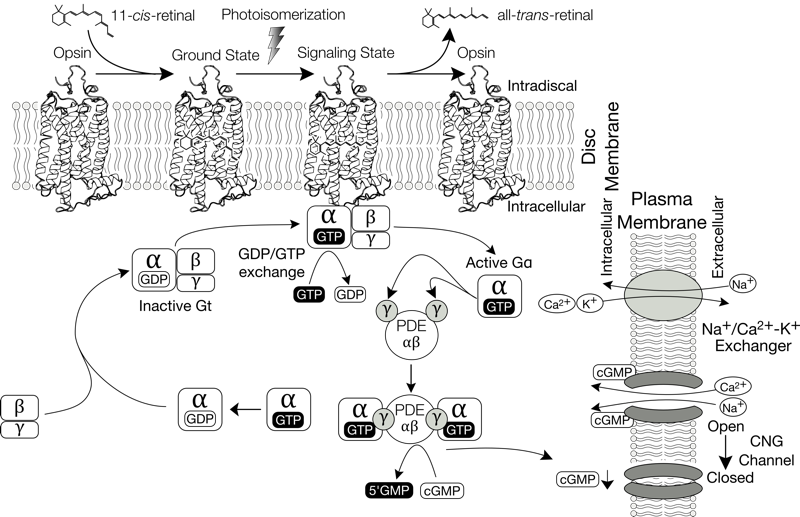Phototransduction in mammalian eye
Mammals capture photons on the retina in the back of the eye, where specialized photoreceptor cells are expressed. These cells contain pancake like membranes packed with a photoreceptor molecule, called rhodopsin. Rhodopsin consist form the chromophore, retinal, and the apoprotein. The retinal is isomerized from 11-cis to all-trans upon light absorption, and it triggers the activation of rhodopsin. In other words, the isomerization starts the structural changes necessary to form a signaling state. Activated rhodopsin can bind to the G-protein and catalyze its GDP/GTP exchange, which activates the G-protein by dissociating in to alpha and beta/gamma. The Galpha then activates phosphodiesterase (PDE), resulting in the decrease of cGMP concentration inside the cell. Cell membrane potential is maintained by cyclic nucleotide gated channels (CNG channels), and the decrease in cGMP concentration closes these channels.


